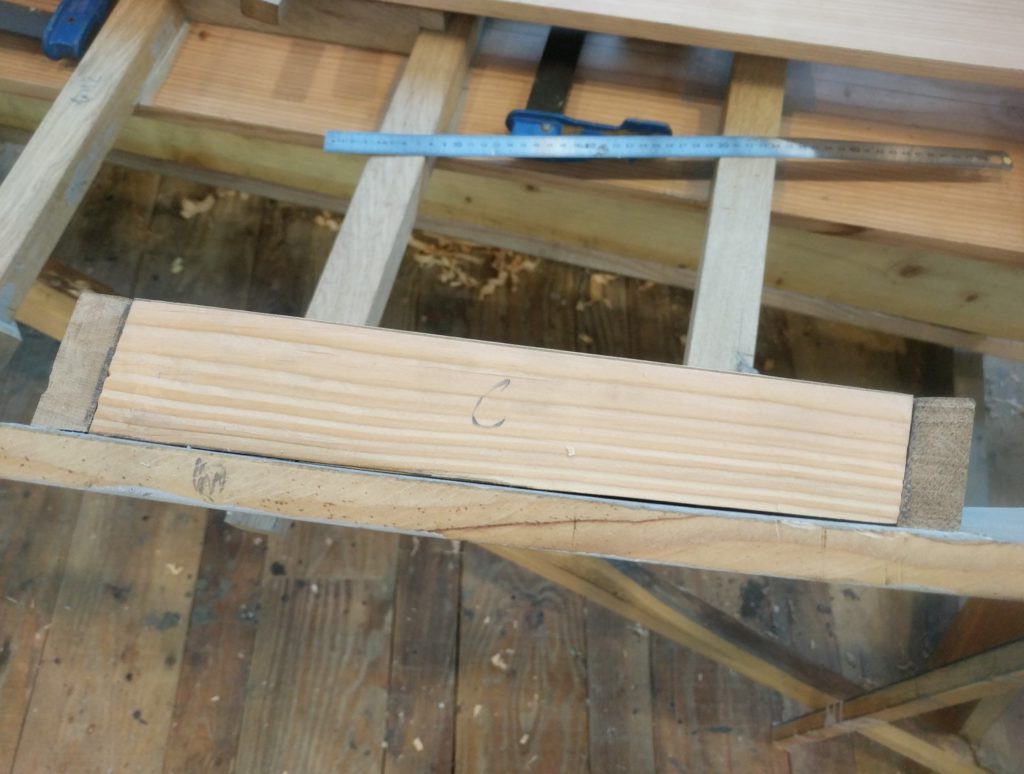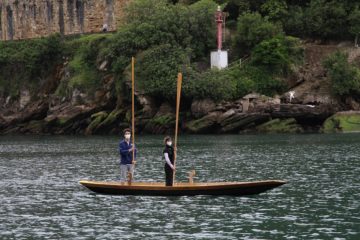Time to fasten the seat-risers! Or is it?
Normally, the spaces between two frames and seat-riser and outside plank are filled with larch blocks. There is no gunwale on the sandolo s’ciopon and the blocks help strengthen the whole boat.
Usually, every other space is left empty in order to be able to tie a rope around the seat-riser when mooring. This is especially useful if you think that there is no stringer either on this kind of boat.
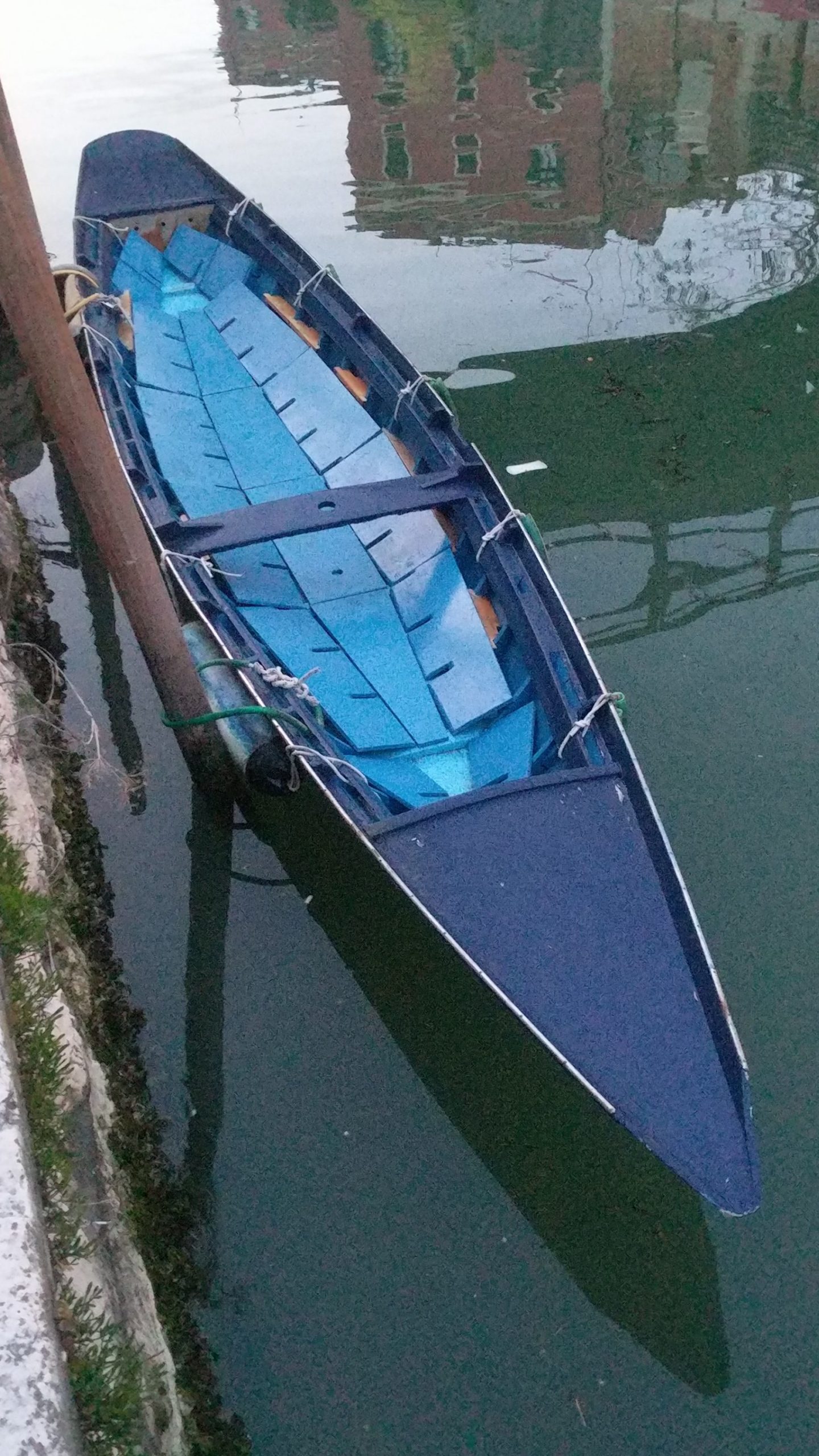
These blocks are traditionally fitted after the seat-riser has been fastened, but we decided it would be easier to fit them before.

We also finally installed the last frames, which sit directly onto the stem and don’t have a proper floor timber.

Since they are hidden under the deck, many times they are not even cut like the rest of the frames, and square pieces are used instead. But we had a couple wrong frames left from the previous weeks and decided to recycle them.
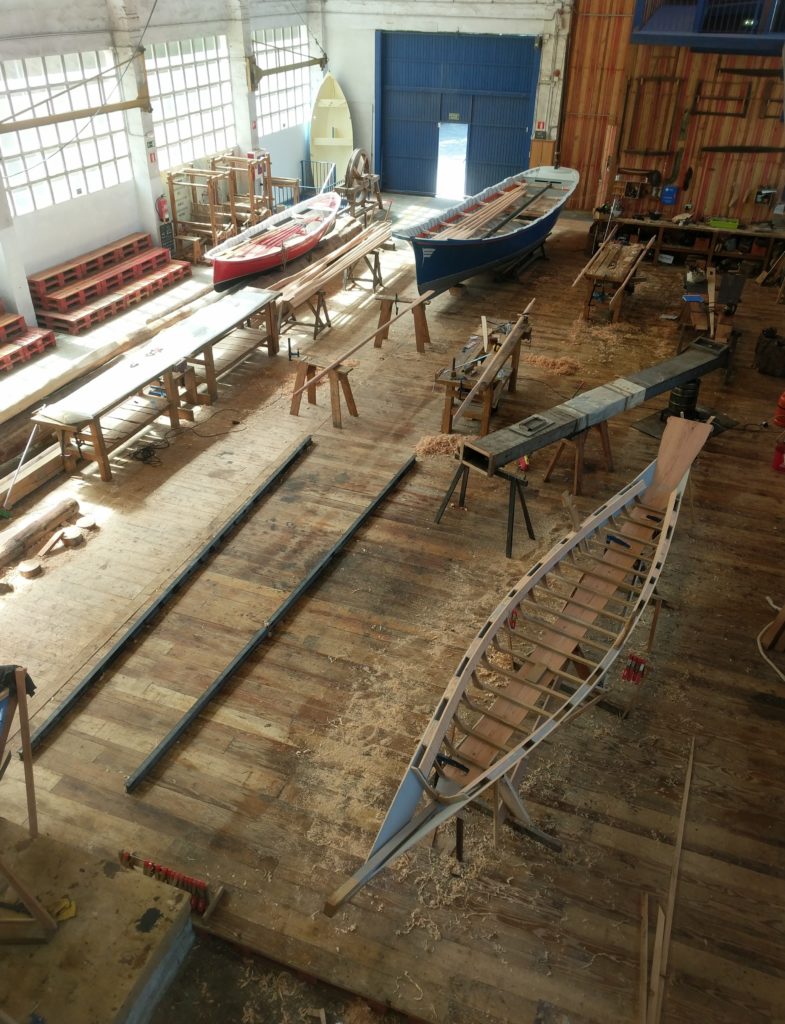
Alejandro, a volunteer interested in applying for the Aprendiztegi, has been helping us this week, therefore we managed to get a lot of work done.
Here he’s drilling the hole for the mast in the center of the thwart he has been preparing.
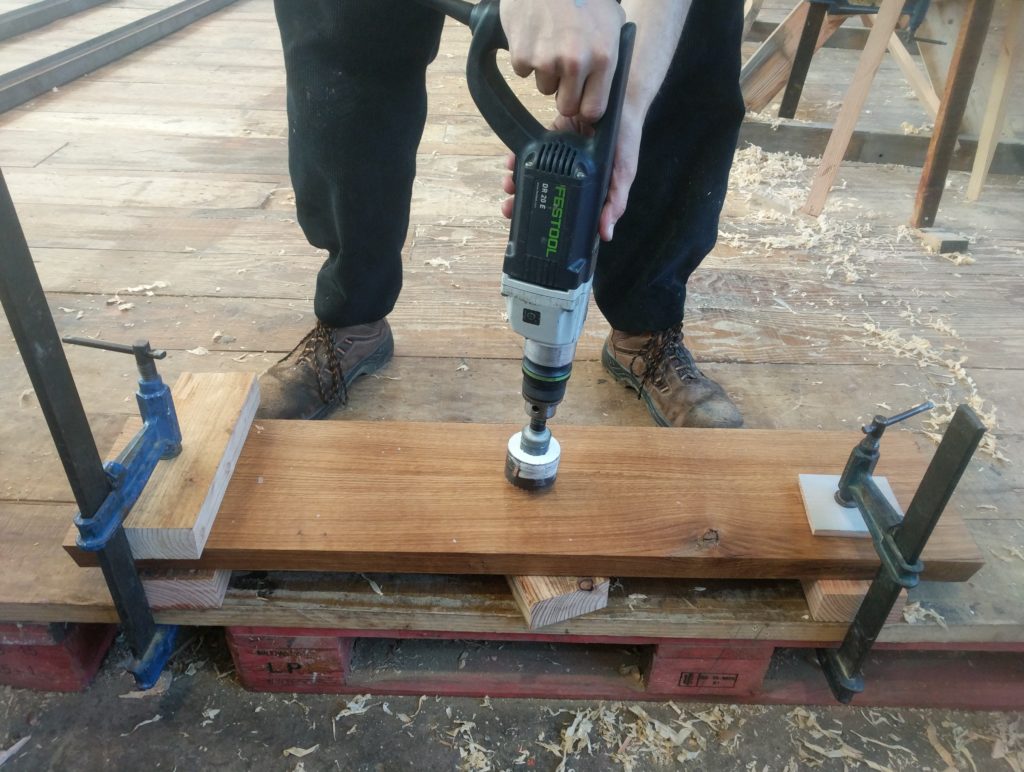
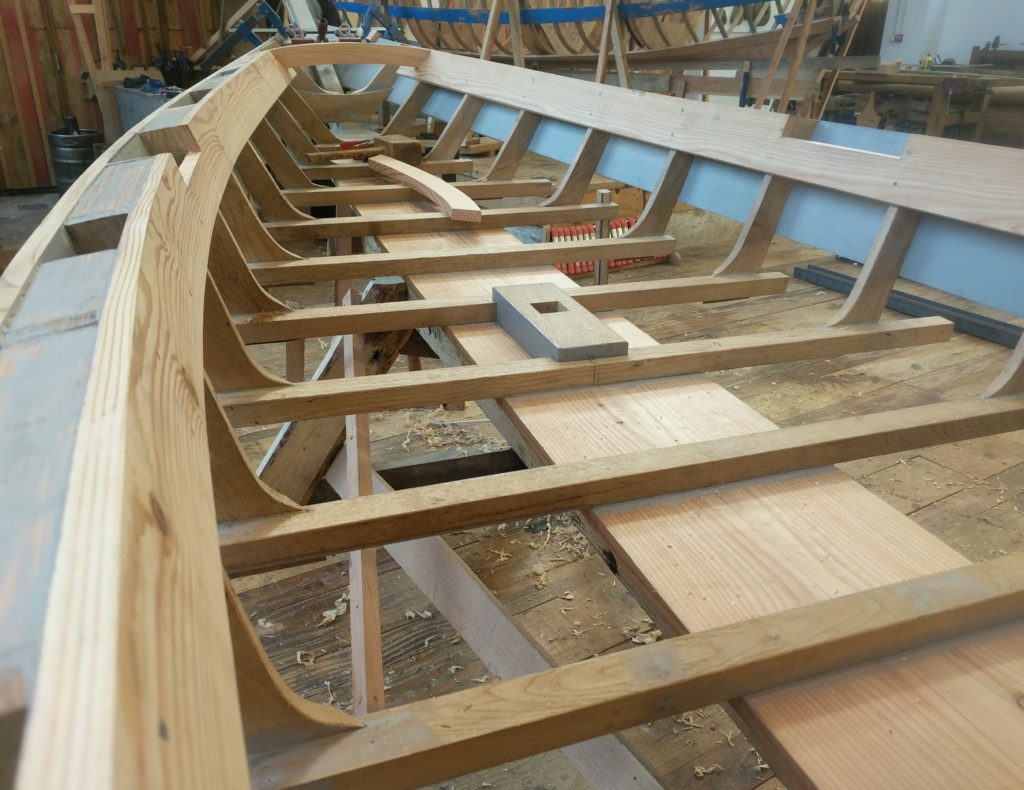

Next week we’ll focus on closing the decks, plus some other little things… Stay tuned!
